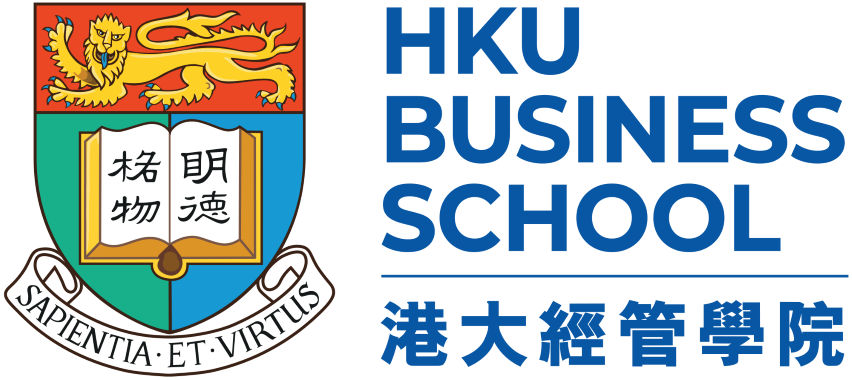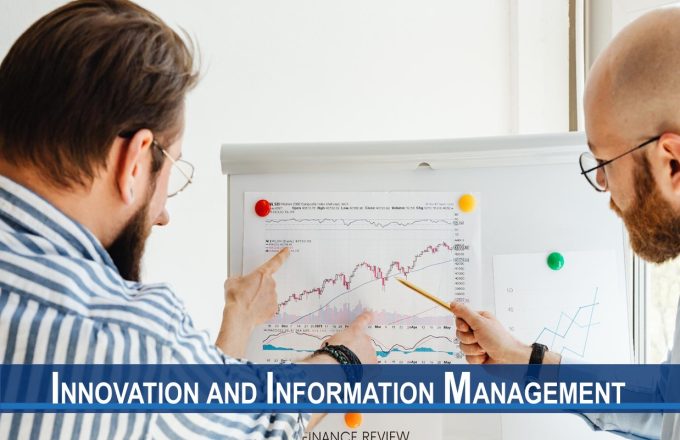As one of the most important financial innovations in the last two decades, credit default swap (CDS) contracts have been initiated and actively traded in the market to hedge against credit risks. However, little is known about how these financial innovations affect an underlying firm's operations. In this empirical study, we find that an underlying firm's operational efficiency is significantly improved with the inception of CDS trading. Our results are robust to multiple causal identification strategies. Further analysis suggests that the inception of CDS tends to enhance the operational efficiency of a firm through the supply chain financing capability and trade credit. We also postulate that CDS leads to enhanced efficiency through institutional monitoring and improvements in management effectiveness. We then obtain suggestive evidence. Our findings have direct implications concerning the ongoing policy debate surrounding CDS. We contribute to operations management research by exploring how innovations in the financial market would, in turn, affect the operational performance of firms.
Sep 2022
Production and Operations Management
This paper investigates the impact of the abolition of the civil service exam on local governance in early twentieth-century China. Before the abolition, local elites collected surtaxes that financed local public goods, but they were supervised by the state and could lose candidacy for higher status if they engaged in corrupt behavior. This prospect of upward mobility (POUM) gave them incentives to behave well, which the abolition of the exam removed. Using anti-elite protests as a proxy for the deterioration of local governance, we find that prefectures with a higher POUM experienced more incidents of anti-elite protests after the abolition.
Sep 2022
The Journal of Economic History
We examine the effect of labor mobility on venture capital (VC) investment. Following the staggered adoption of the inevitable disclosure doctrine that restricts labor mobility, VCs are less likely to invest in affected states. This effect is more pronounced when human capital is more important to startups, when VC investment is more uncertain, and when VCs’ monitoring costs are higher. The reduced innovation productivity of employees is a plausible underlying mechanism. To mitigate this adverse effect, VCs stage finance startups more and syndicate more with other VCs. Our paper sheds new light on the real effects of labor market frictions.
Sep 2022
Journal of Financial and Quantitative Analysis
We investigate an editorial review program for which a review platform supplements user reviews with editorial ones written by professional writers. Specifically, we examine whether and how editorial reviews influence subsequent user reviews (reviews written by noneditor reviewers). A quasiexperiment conducted on a leading review platform in Asia, based on several econometric and natural language processing techniques, yields empirical evidence of an overall positive effect of editorial reviews on subsequent user reviews from the platform’s perspective. First, more reviews are provided for restaurants that receive editorial reviews. In addition, these reviews discuss substantive topics while also including a discussion on other topics, leading to a net increase in content length and variety. They also are more neutral in sentiment and are associated with lower rating valences. Further analysis of the mechanism reveals that the subsequent user reviews of the restaurants that receive editorial reviews become more similar to the editorial reviews in regard to topics, sentiment/rating, length, and readability, indicating a herding effect in how to write a review as the main driver of the change in the subsequent reviews. We further empirically isolate this herding effect among long-time reviewers. The findings suggest that review platforms could use an editorial review program not only to boost the quantitative aspect of user reviews but also, to manage the qualitative aspect as well.
Sep 2022
Management Science
This study examines how the market share of dark venues changes at earnings announcements. Our analysis shows a statistically significant increase in dark market share in the weeks prior to, during, and following the earnings announcement. We also predict and find evidence that increases in dark market share around earnings announcements are higher for firms with high quality accounting information. In addition, we find a positive relation between the change in dark market share and the speed of resolution of investor disagreement-a key dimension of informational efficiency, which suggests that dark trading is associated with an improvement in market quality. How market fragmentation changes around news events, the role accounting information plays in market fragmentation, and how changes in market fragmentation relate to market quality can help provide insights to securities regulators.
Sep 2022
The Accounting Review
This paper presents an economic framework to study strategic interactions along the analyst-auditor-owner disciplinary chain, in which the auditor examines the financial reports prepared by the owner, and the analyst uncovers financial misreporting as well as audit failure. We find that although analyst scrutiny ex post detects misreporting, it ex ante aggravates the owner's misreporting behavior and further impairs financial statement reliability if the legal penalties for the auditor and the owner are small. We also show how the effects of a regulation depend on its target's disciplinarian(s). Specifically, (i) although enhancing the auditor's legal liability always increases audit quality and financial statement reliability, it decreases investment efficiency if and only if the analyst is highly independent; and (ii) increasing the owner's misreporting penalty decreases investment efficiency if and only if either of (but not both) the regulations on the auditor and the analyst is strict.
Sep 2022
The Accounting Review
This paper studies whether and how mandatory nonfinancial disclosure affects firms’ real decisions. I exploit a disclosure regulation enacted in California, which mandates that firms disclose how they conduct due diligence to address their suppliers’ human rights abuses. I find that treated firms increase their supply chain due diligence, and their suppliers’ human rights performance improves following the regulation. The effects are stronger when firms face greater pressure from non-governmental organizations (NGOs) and socially conscious shareholders, when customers have greater incentives to use the newly disclosed information, and when the regulation leads to a larger increase in information comparability. Collectively, the results suggest that mandatory nonfinancial disclosure can affect firms’ real decisions through market mechanisms and that stakeholder responses play a key role.
Sep 2022
The Accounting Review
We study the optimal contracting problem with subjective evaluation when the principal can ask the agent to revise his work. The possibility of revision benefits the principal by providing the option value of making another attempt at the work. However, it also introduces a new type of incentive problem for the principal: she may ask for revision even if it is inefficient to do so. This new incentive issue for the principal also affects the incentive of the agent: he may procrastinate his effort in anticipation of excessive revision. This results in a trilemma: The optimal contract cannot simultaneously provide for efficient revision, efficient effort, and minimal ex post surplus destruction. The optimal contract will of necessity contain at least one of the following problems: revision, the principal asks for excessive revision; procrastination, the agent shirks in the early stage; or punishment, excessive surplus destruction at low-quality final output.
Aug 2022
Management Science
Companies that provide a two-sided platform for users to proactively seek a match face great challenges in increasing matching efficiency and ensuring match quality. This paper examines how information designs can be used to improve matching outcomes when users derive utility from a match's vertical attribute (i.e., quality) and its horizontal attribute (i.e., idiosyncratic fit). We consider a game-theoretic model in which competing senders propose matching requests to competing receivers and users on the two sides are differentiated both horizontally and vertically. We first demonstrate that users' preference for the vertical attribute intensifies competition and hurts matching efficiency, and to avoid competition a sender may switch from a close receiver to a distant receiver even when the weight that he places on a match's horizontal closeness increases. Second, we examine four information designs in which one type of information from one side of the market is withheld. Designs that withhold either side's vertical information increase the number of matches, with the improvement from withholding receivers' information being greater. By contrast, designs that withhold either side's horizontal information can cause all requests to concentrate on one receiver and lead to the most severe match failure. Third, an increase in matching volume comes at the expense of certain users' welfare, as withholding one side's vertical information can hurt not only high-quality users on both sides but also the low-quality users on the opposite side. Although withholding one side's horizontal information may increase the matching volume under certain conditions, it can be Pareto dominated by a design that withholds one side's vertical information. Fourth, when strategic user pricing is involved, it not only redistributes user welfare but also corrects for matching distortion. Finally, in contrast to the result when strategic pricing is absent, when strategic pricing is present the platform withholding one side's vertical information can benefit all users on the opposite side, while withholding one side's horizontal information can benefit all users on the same side.
Aug 2022
Production and Operations Management

























